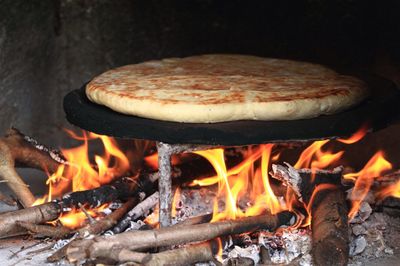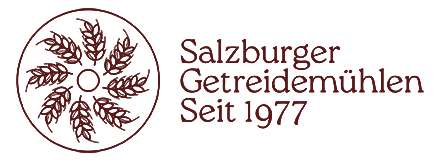
Breads as we know them today, or bake or buy them, have not always existed. In the beginning, cereals were processed by people into porridges and flat breads and served as a basic food. However, these cereal products did not have a long shelf life. It was only by chance and through the fermentation of food that it was discovered that it was possible to extend the shelf life by acidification. The patties could now be used to make fluffy bread dough. At the same time, they came across a preform of beer, which was also used for bread making.
People have known cereal porridges and pancakes for 5000 years. And since at that time often also pounded nuts, seeds and fruits were added, you can actually say that the muesli was discovered quite early. To this day, we eat cereal porridges with these very ingredients. But we call them, for example, rather “breakfast porridge with berries, flaxseed and almonds”.
Now to return to the discovery of sourdough: Since at that time it was also possible for people to bake fluffy and thicker flatbreads with elastic crusts, the porridge people separated from the bread people. To this day, it is the case that there are distinctions in this regard. Only one-third of the world’s population eats bread. Many of the porridge people are found in Asia and Africa, among other places, with the many millet and rice preparations. Equally different types of pita are consumed daily around the world and are “descendants” of the pita bread from the Stone Age. These include tortillas in Mexico, oat cakes in Scotland, injeras in Ethiopia, chapati in India, and many more!
And if you use our
Salzburg grain mills
fresh, wholesome flour every day, then the doors are open for you to try out a wide variety of bread recipes. On our blog we have many of them for you >>
Münzing-Ruef, I. (2000): Course book healthy eating. The kitchen as nature’s pharmacy. Munich: Wilhelm Heyne Verlag
That was: Early porridge and bread people
Address:
Gasteigweg 25,
5400 Hallein
Austria
Opening hours:
Monday to Thursday: 09 – 16:00
Friday: 09 – 12:00
Contact:
Phone: +43 6245 83282
E-mail: info@agrisan.at
Address:
Gasteigweg 25,
5400 Hallein
Austria
Opening hours:
Monday to Thursday: 09 – 16:00
Friday: 09 – 12:00
Contact:
Phone: +43 6245 83282
E-mail: info@agrisan.at

